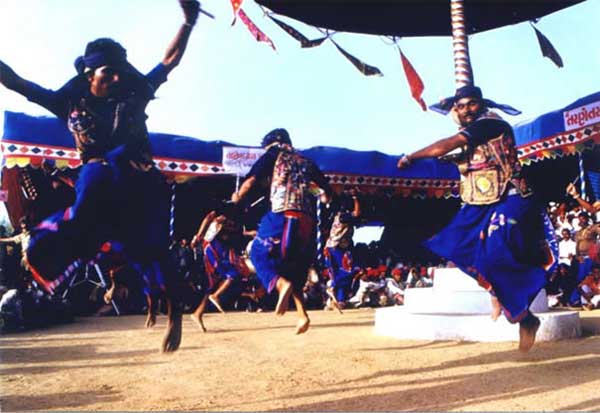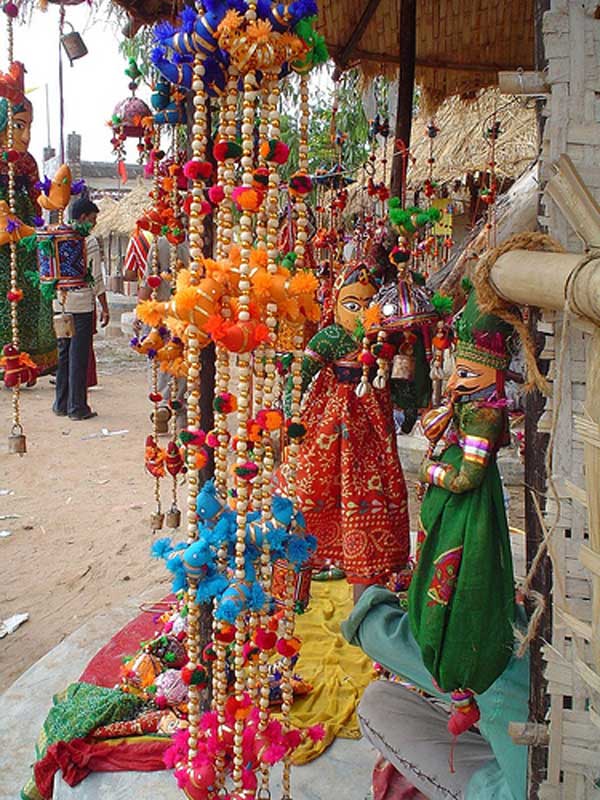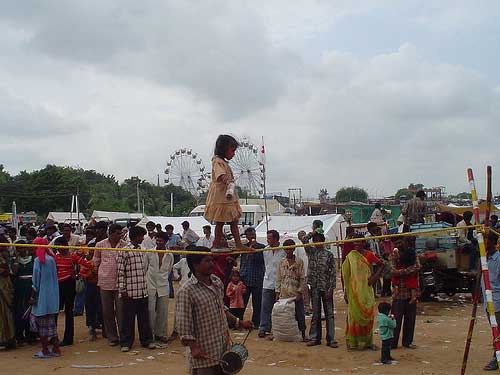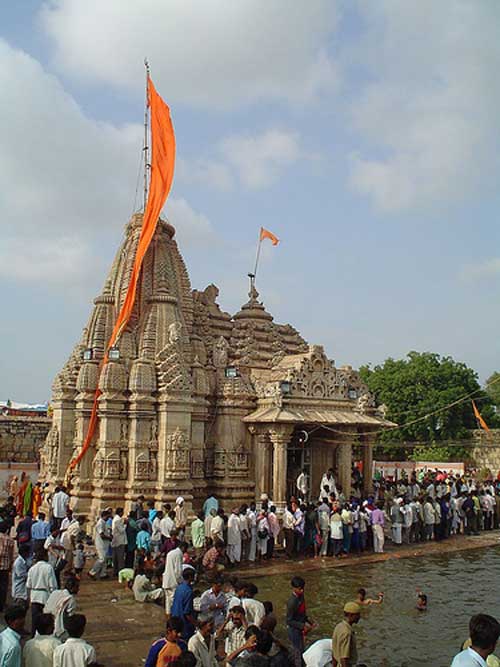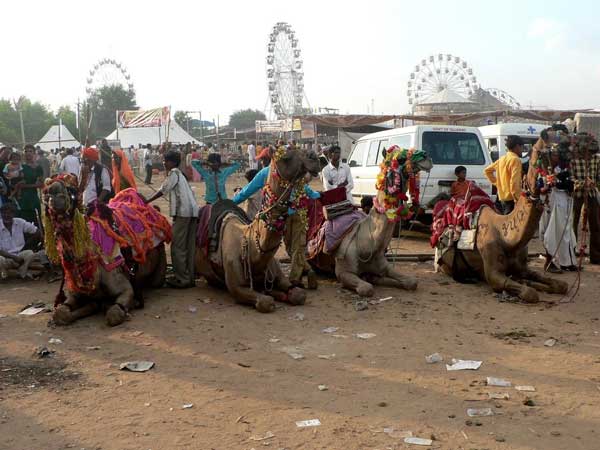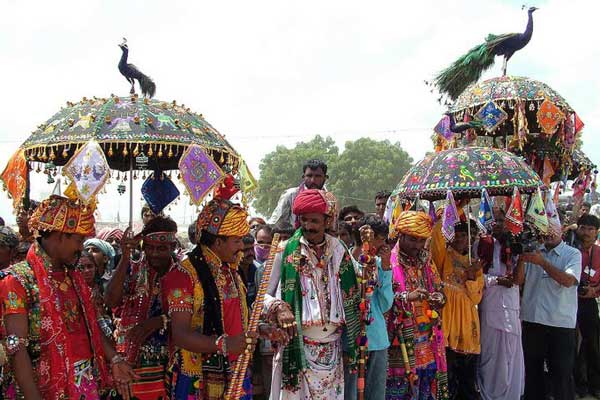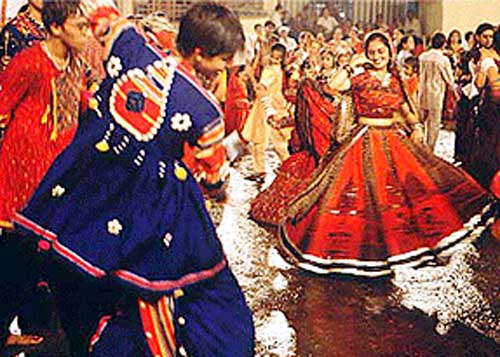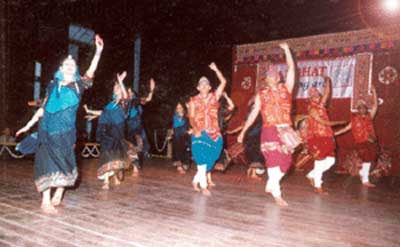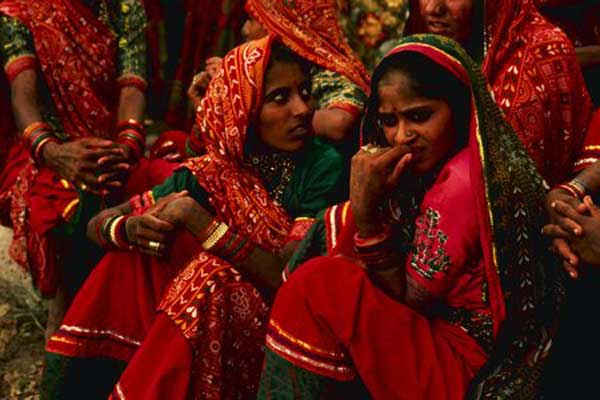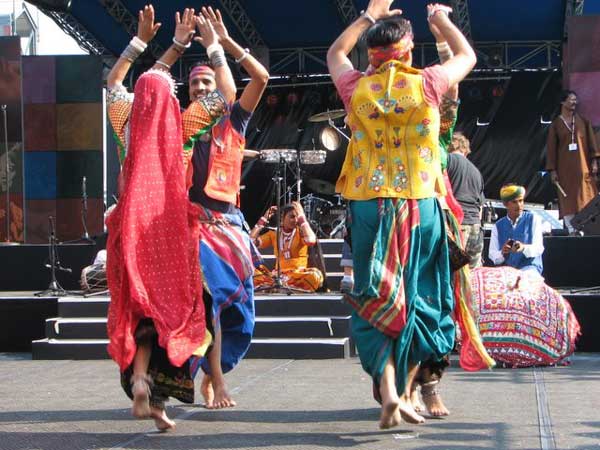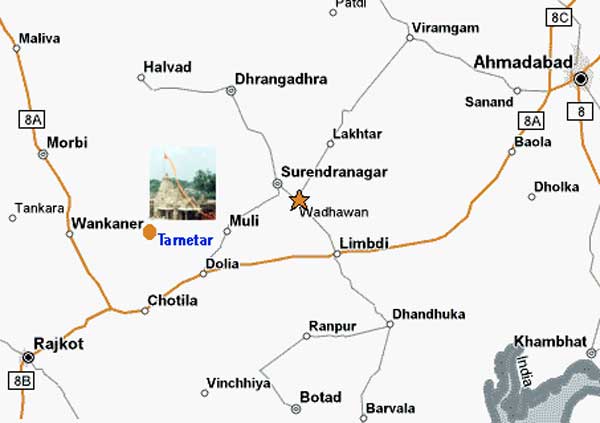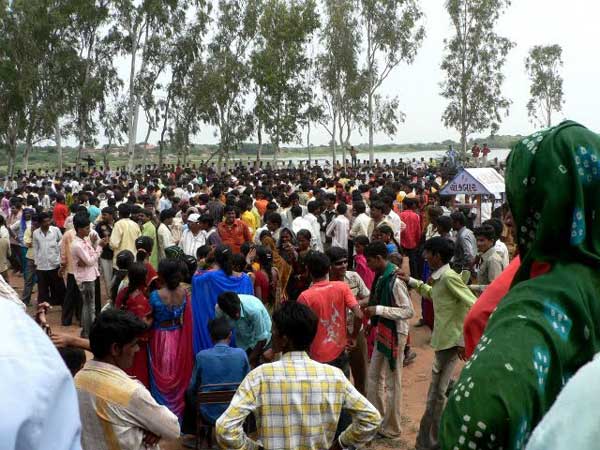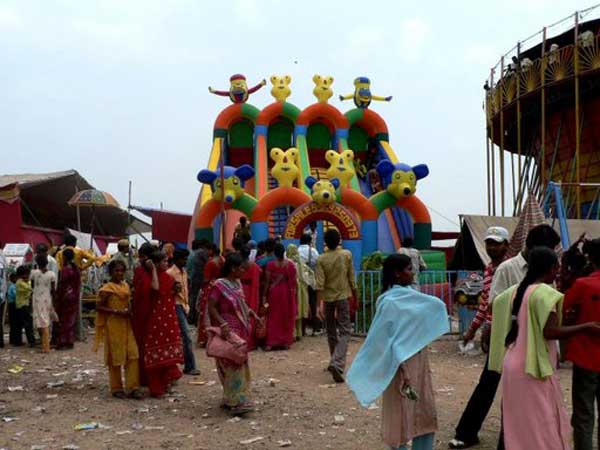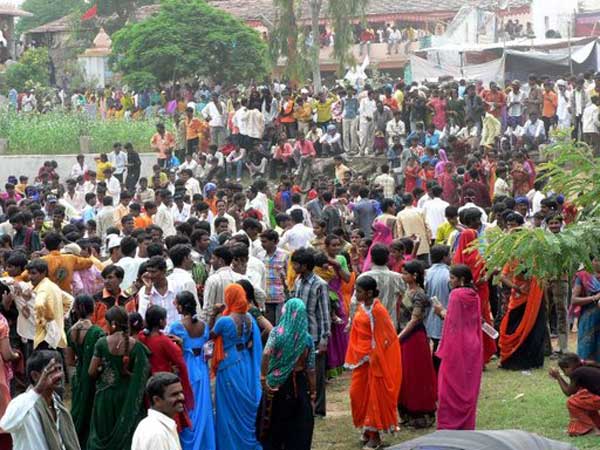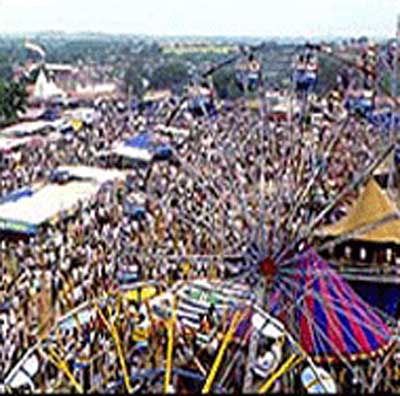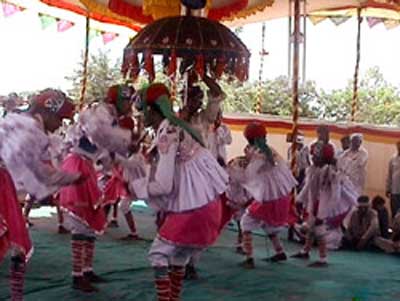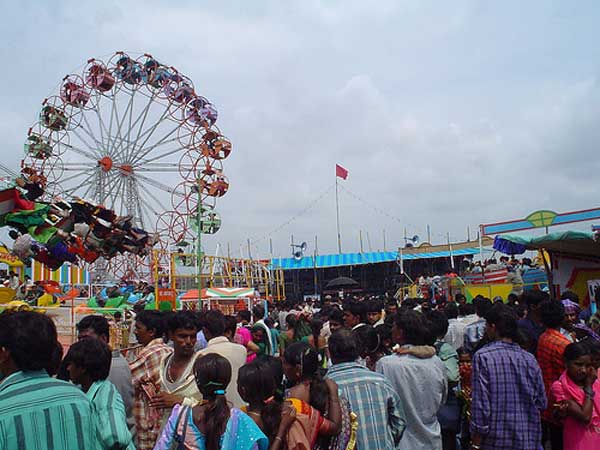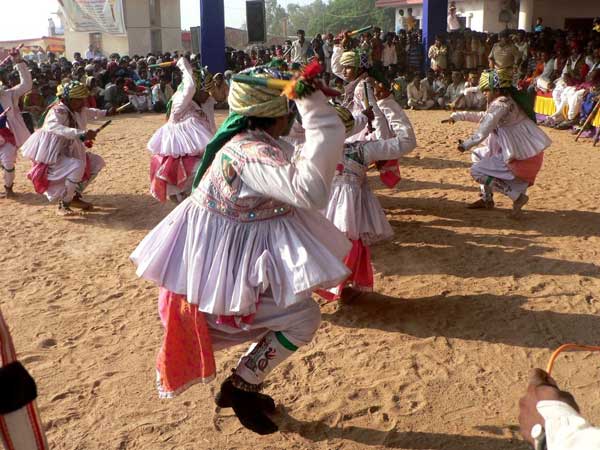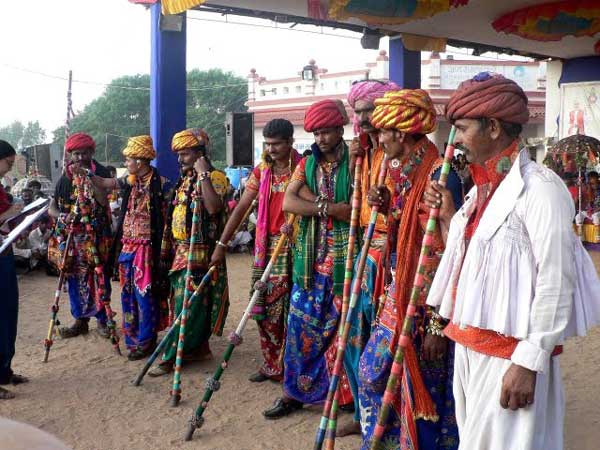Tarnetar Fair
Tuesday, 06 October 2009 06:59
Tarnetar Fair-Gujarat |
About: |
|
The Tarnetar Fair is a vibrant cultural festival held annually in the village of Tarnetar in Gujarat. Known for its colorful displays of local traditions, music, dance, and handicrafts, the fair is celebrated in honor of the Trinetreshwar Mahadev Temple. It is one of the most popular fairs in Gujarat, drawing visitors from across the country to experience the rich culture and rural life of Saurashtra. Based on the legend of Draupadi's swayamvara, this fair is a celebration of ethnic Gujarat’s folk-dance, music, costumes and the arts, centered around young tribal men and women seeking marriage partners. But even for those not interested in finding a spouse, the romance and excitement in the air are captivating, and every year the fair seems only to grow in popularity, attracting visitors and tourists from Gujarat, elsewhere in India, and even abroad. 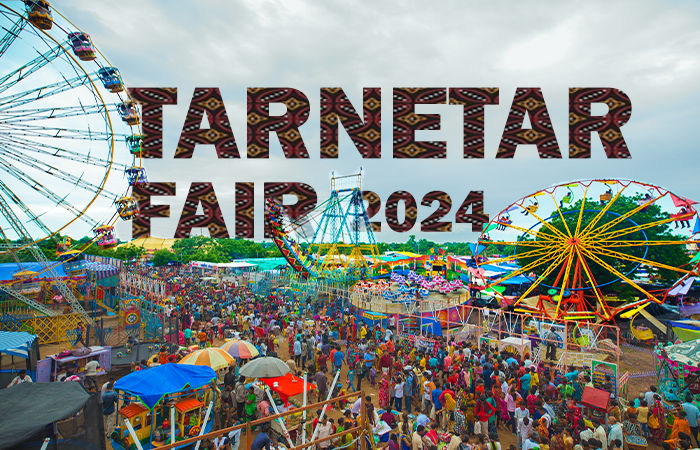 Rabari women of nearby Zalawad perform the famous circular folk dance called rahado. Their marital status is indicated clearly by their costumes; a black zimi (skirt) means she is married. But if a woman is wearing a red zimi, it means she has not yet tied the knot, probably seeking a husband. The potential husbands seeking brides are elegantly dressed in colorful dhotis, artistically designed waistcoats and a head-cloth twisted at an angle, moving about the fairground at Tarnetar with striking umbrellas, advertising the bachelorhood they are keen to relinquish. |
Location info: |
| Address:Tarnetar , Surendranagar,Gujarat |
| District: Surendranagar |
| Coordinates: Located near the Trinetreshwar Mahadev Temple in the village of Tarnetar, around 40 km from the town of Thangadh. |
| Best time to visit: Best time to visit: The fair tales place in the month of August-September. According to the local calendar the fourth, fifth and sixth days of Shukla Paksha of the month |
Climate/Weather: |
| Summer: Hot and dry, with temperatures between 30°C and 40°C (March to June) Monsoon: Moderate rainfall, making the weather pleasant during the fair in August/September. Winter: Cool and comfortable, with temperatures ranging from 12°C to 25°C (October to February) |
History: |
|
The Tarnetar Fair has deep cultural and mythological roots, dating back over 200 years. It is linked to the Trinetreshwar Mahadev Temple and the legend of the Mahabharata. According to folklore, the fair commemorates the swayamvar (marriage selection ceremony) of Draupadi, where suitors competed in archery to win her hand. The fair has since evolved into a celebration of local traditions, especially for the Koli and Bharwad tribes, who come dressed in their finest traditional attire. |
Importance of festival: |
| The Tarnetar Fair holds significant cultural, social, and religious
importance for the people of Gujarat, especially for the local Koli and
Bharwad tribes. Here's why it is so important:
The old Shiv temple is a marble temple located on the banks of a rivulet. The temple has a kund or a reservoir. According to legends, this place was originally the place where Draupadi’s 'swayamvara' was held.Tarnetar Fair of Gujarat is a popular husband-hunt fair. During this fair young women with colorful dress walk through the Tarnetar Fair and choose their groom among the young men who assemble under gorgeously embroidered umbrellas. |
Method of Celebration: |
| Cultural Performances: The fair is famous for its vibrant folk music and dance performances. Traditional dances like Garba, Raas, and Hudo are performed by men and women dressed in colorful, traditional attire. These performances are central to the celebration and reflect the cultural heritage of Gujarat. Decorated Umbrellas: One of the unique features of the Tarnetar Fair is the display of beautifully decorated umbrellas. Young men carry elaborately embroidered and bejeweled umbrellas to attract attention. The umbrellas are symbols of status and readiness for marriage, and they add color and vibrancy to the festival. The most thrilling sight of all is the 'rasada', the fascinating folk dance performed by hundreds of women, moving gracefully in a single circle. Dancing gaily to the accompaniment of four drums and 'jodia pava' (double flutes.) their gorgeous traditional costumes and captivating dances makes the Tarnetar Fair a unique synthesis of folk art.An added attraction of the fair is the lively folk dance performances such as ras-garba and hudo dance and the rasada, the fascinating folk dance performed by hundreds of women. Swayamvar Tradition: Ras Garba Style of Dance: |
Mobile range info: |
| Mobile connectivity is generally available, but it may be patchy in some rural areas around the fair. Most major telecom providers offer coverage. |
How to reach? |
| By Air:The nearest airport is Rajkot Airport, around 90 km from Tarnetar. |
| By Rail:The nearest railway station is Thangadh, about 40 km away. |
| Road Transport:Tarnetar is close to the town of Surendranagar, 59 kms away. Rajkot is 75 kms and Jamnagar is about 162 kms away. It is also not difficult to plan a journey to Kutch from here. |
Culture of festivities: |
| The Tarnetar Fair is deeply rooted in the tribal customs of the Koli,
Bharwad, and other local communities. Participants proudly wear their
traditional attire—brightly colored, heavily embroidered clothes adorned
with intricate mirror work. Men often wear turbans and carry decorated
umbrellas, while women dress in ornate ghagras (long skirts) and cholis
(blouses), embellished with embroidery and bead
Folk music and dance are integral to the Tarnetar Fair. Dances like Garba, Raas, and Hudo are performed to the tunes of traditional instruments like the dhol, flute, and tabla. These lively performances celebrate the region’s folklore and are often spontaneous gatherings of locals who dance in circles to upbeat folk songs. The energy of the music and the rhythmic footwork in these dances create a festive atmosphere throughout the event. |
Nearest Visiting places: |
| Chotila Temple: A revered Hindu temple dedicated to Goddess Chamunda, located about 50 km from Tarnetar. Wankaner Palace: A historical palace in the nearby town of Wankaner, around 70 km away, known for its blend of Indian and European architectural styles. Rajkot: Chotila Hill: |
Nearest Petrol pumps: |
|
The nearest petrol pump is located in Thangadh, approximately 40 km from Tarnetar. |
Hotels/Lodge/Accommodation: |
|
Hotel Shiv Palace:Located in nearby Thangadh, providing comfortable budget accommodation. |
Help Line/Phone Number: |
| Police Station:100 |
| Nearest Hospital: Gandhi Hospital:SH 20,Surendra Nagar,Gujarat,India RR. Hospital:Limbdi,Surendranagar,Gujarat,India |
| Society/Community Phone Number: |
| Link:www.indianholiday.com |
Video
Dynamic View
|
|
| Tarnetar Fair |
| Tarnetar Fair Gujarat is a popular fair in the state of Gujarat. This fair does not remain within the boundary of state but crosses it to reach the followers and the devotees. That shows the importance and the significance of the fiesta. The fair of Tarnetar bears mythological significances. Mahabharata the epic of Hindus bears various significances of the fair and the place. The fair is the best place where tourists can experience the rich heritage of India and the colorful vivacity that lies in every celebration. Based on the legend of Draupadi swayamvara, this fair is a celebration of ethnic Gujarat folk dance, music, costumes and the arts, centered around young tribal men and women seeking marriage partners. But even for those not interested in finding a spouse, the romance and excitement in the air are captivating, and every year the fair seems only to grow in popularity, attracting visitors and tourists from Gujarat, elsewhere in India, and even abroad....more |
